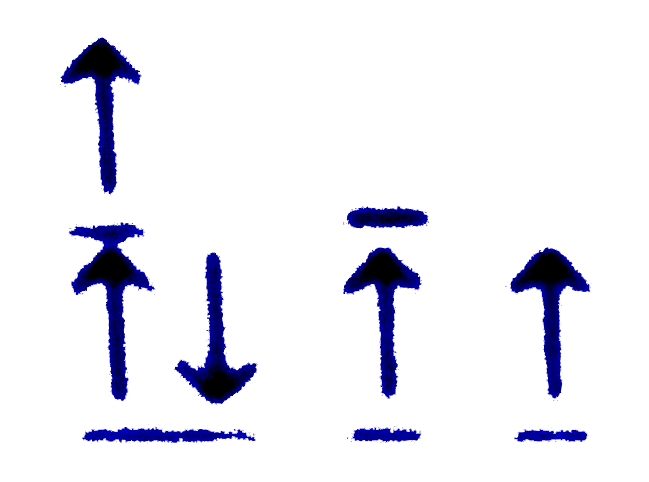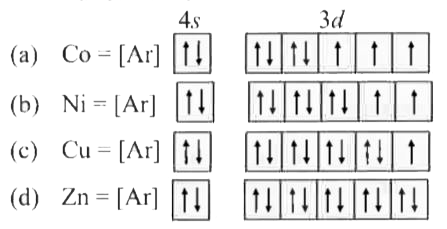The electronic distribution of Mn(25) is
2, 8, 13,2
2, 8, 14, 1
2, 8, 8,7
2, 8, 10,5
The correct Answer is:A
To determine the electronic distribution of manganese (Mn) with atomic number 25, we can follow these steps:
Step 1: Understand the Atomic Number
The atomic number of manganese is 25, which means it has 25 electrons.
Step 2: Fill the Electron Shells
We will fill the electron shells according to the maximum capacity of each shell:
- K shell: Can hold a maximum of 2 electrons.
- L shell: Can hold a maximum of 8 electrons.
- M shell: Can hold a maximum of 18 electrons, but we will fill it according to the number of electrons remaining after filling K and L.
- N shell: Can also hold a maximum of 32 electrons, but we will fill it last.
Step 3: Fill the K Shell
- The K shell can hold 2 electrons.
- Electrons in K: 2
Step 4: Fill the L Shell
- The L shell can hold 8 electrons.
- Electrons in L: 8
Step 5: Fill the M Shell
- After filling K and L, we have used 2 + 8 = 10 electrons.
- We have 25 - 10 = 15 electrons left to distribute.
- The M shell can hold a maximum of 18 electrons, but since we only have 15 left, we will fill it with 15 electrons.
- Electrons in M: 15
Step 6: Fill the N Shell
- The N shell can hold electrons, but since we have filled all 25 electrons (2 in K, 8 in L, and 15 in M), we do not need to fill any electrons in the N shell.
- Electrons in N: 0
Step 7: Write the Electronic Configuration
Now, we can write the electronic configuration based on the distribution:
- K: 2
- L: 8
- M: 15
- N: 0
Thus, the electronic configuration of manganese (Mn) is:
2, 8, 15, 0
Final Answer
The electronic distribution of Mn (25) is 2, 8, 15, 0.
---
The atomic number of manganese is 25, which means it has 25 electrons.
We will fill the electron shells according to the maximum capacity of each shell:
- K shell: Can hold a maximum of 2 electrons.
- L shell: Can hold a maximum of 8 electrons.
- M shell: Can hold a maximum of 18 electrons, but we will fill it according to the number of electrons remaining after filling K and L.
- N shell: Can also hold a maximum of 32 electrons, but we will fill it last.
- The K shell can hold 2 electrons.
- Electrons in K: 2
- The L shell can hold 8 electrons.
- Electrons in L: 8
- After filling K and L, we have used 2 + 8 = 10 electrons.
- We have 25 - 10 = 15 electrons left to distribute.
- The M shell can hold a maximum of 18 electrons, but since we only have 15 left, we will fill it with 15 electrons.
- Electrons in M: 15
- The N shell can hold electrons, but since we have filled all 25 electrons (2 in K, 8 in L, and 15 in M), we do not need to fill any electrons in the N shell.
- Electrons in N: 0
Now, we can write the electronic configuration based on the distribution:
- K: 2
- L: 8
- M: 15
- N: 0
2, 8, 15, 0
The electronic distribution of Mn (25) is 2, 8, 15, 0.
Topper's Solved these Questions
- METALS, NON - METALS AND METALLURGYBOOK - ARIHANT PUBLICATION JHARKHANDCHAPTER - METALS, NON - METALS AND METALLURGYEXERCISE - EXAM BOOSTER FOR CRACKING EXAM
40 Videos
- MODEL SOLVED PAPER 2017BOOK - ARIHANT PUBLICATION JHARKHANDCHAPTER - MODEL SOLVED PAPER 2017EXERCISE - SECTION III : MATHEMATICS
50 Videos
Similar Questions
Knowledge Check
What is the electronic configuration of Mn2+
A[Ne]3d54s0B[Ar]3d54s2C[Ar]3d54s0D[Ne]3d54s2The electron distribution in an aluminium atom is
A2,8,3B2,8,2C8,2,3D2,3,8Which of the following energy diagrams shows the electron distribution according to the crystal field model of the 3d-electrons in Mn(H2O)2+6 ?
A B
B C
C D
D
The electronic configuration of the Mn4+ ion is -
View SolutionThe d-electron configurations of Cr2+,Mn2+,Fe2+ and Co2+ are d4,d5,d6 and d7 respectively. Which one of the following will exhibit minimum paramagnetic behavious?
View SolutionThe d-electron configurations of Cr2+,Mn2+,Fe2+ and Co2+ are d4,d5,d6 and d7 respectively. Which one of the following will exhibit minimum paramagnetic behavious?
View SolutionMn has electronic configuration
View SolutionMn has electronic configuration
View Solution

